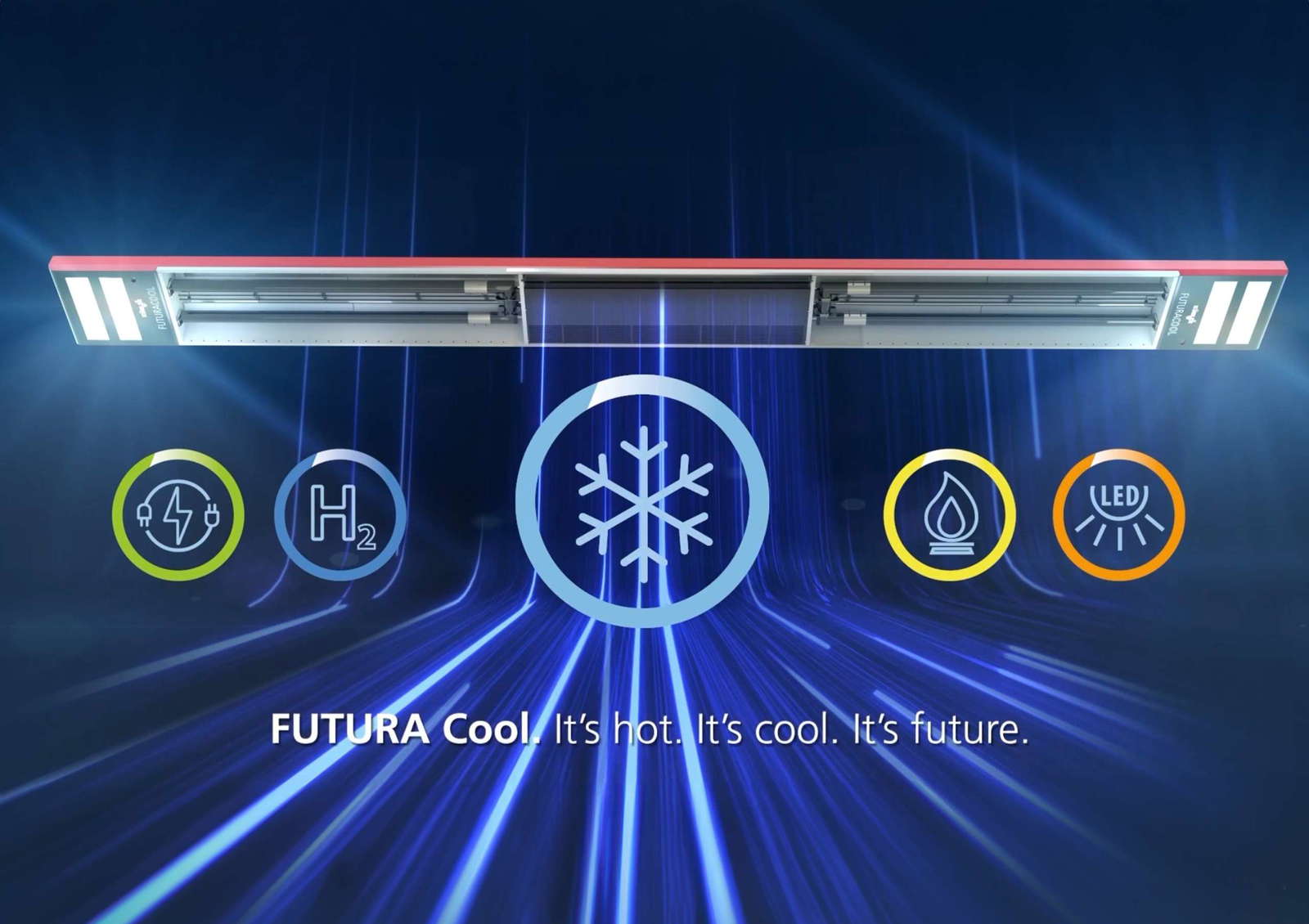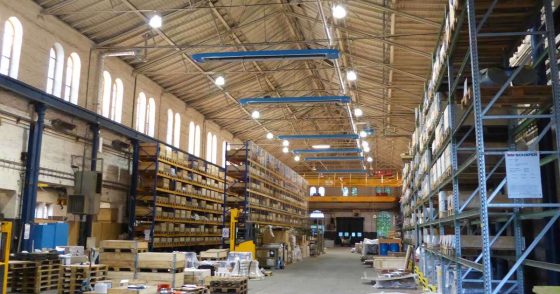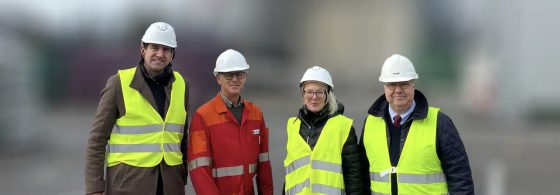Energy efficiency 2.0: AI revolution in hall heating technology

"The fusion of artificial intelligence with advanced, dynamic infrared indoor heating systems marks a revolutionary era in energy efficiency and individually adapted indoor climates," says Thomas Kübler, founder and managing partner of KÜBLER GmbH. The rapid responsiveness of infrared heating compared to slower systems, such as a heat pump in combination with hydraulics, represents a decisive advantage. This dynamic is reinforced by the optimized integration of artificial intelligence, which ensures more efficient comfort with minimal energy losses. The significant role of this decisive advantage is particularly evident in intelligent controls, which enable immediate and customized adaptation to individual user requirements such as different temperature zones in a hall building, even without partition walls. The pilot project at KÜBLER GmbH uses an AI-based system configurator to optimize the construction of heating systems for halls and warehouses.
The successful pilot project is presented on the Green-AI Hub website under the title "AI-based configuration of heating systems":
Construction of hall heating systems
KÜBLER manufactures systems that heat halls in a particularly energy-efficient manner. The portfolio is supplemented by device variants with lighting, cooling and ventilation concepts as well as thermal-supported heating. The latest generation of infrared heaters (FUTURA and MAXIMA E-Hybrid) use biogas, liquid gas, hydrogen (components), natural gas or electricity. Depending on price or availability, it is possible to switch back and forth between these energy sources.
Individual configuration of systems
3D models of the halls are used for planning to ensure the efficient use of heating systems. Materials made of metals, plastics, cardboard, glass fibers and composite materials are used in the production process. The company has various individual solutions for configuring, planning and preparing quotations for systems, such as calculating the heating load and selecting the type and number of units. Information on the systems, such as CAD plans and operating data, is available in various formats at different locations.
Digital twin with visual simulation
The pilot project of the Green-AI Hub Mittelstand therefore links the different pieces of information for the first time via a digital twin. This analyses the data, which enables enormous savings potential for future systems by revealing oversizing and optimizing the technical coordination of individual system components.
The digital twin is supplemented by mixed reality glasses that visualize the system. This allows planned installations to be checked visually in advance on site, e.g. in an assembly hall, in order to identify the most suitable installation of the hall heating based on experience and visual feedback. This can be adjusted again later in the process if necessary. The visual simulation can be used to identify any direct savings potential, such as the fact that fewer or smaller systems are required than originally assumed. Indirect savings potential can also be identified. For example, it is possible to determine whether an additional appliance is required. This would allow the heating appliances to run in their efficient operating mode for longer and be used in a more resource-friendly, durable and generally more sustainable way.
AI as a data interface
The digital twin enables resource savings to be achieved in various phases. A digital product passport within the digital twin lists recyclable components, a step towards a circular economy. Savings can also be achieved during operation. Simulation and mixed reality visualization scenarios can be used to reduce the number or size of systems used. It is also possible to avoid peak operation using the digital image of the appliances in the digital twin and knowledge of appliance usage. This protects the appliances and reduces energy consumption in the form of electricity and gas.
The pilot project considers the hall heating systems in an overall context (Smart Living, Smart City, Industry 4.0 etc.) and includes other sensors and information sources (e.g. hall activity) in the analysis (shared data space). This makes it possible to formulate more precise assessments of usage patterns and types, and therefore holistic predictions. A standardized data interface in the digital twin bundles all data that is important for operations.
Optimized system configuration saves resources
The use of AI not only has an impact on the resource efficiency of the company, but also on the resource efficiency of the customers where the corresponding infrared heaters from KÜBLER have been or will be installed. This also applies retroactively to infrared heaters that have already been installed. For example, maintenance can be adapted to avoid system failure, cost-intensive, unscheduled repairs, wasted resources for travel or cost-intensive consequential damage. Improved planning and dimensioning of new halls allows usage data to be collected and the size and equipment of similar halls to be better planned in future. In addition, AI and the digital twin of the heating systems are being developed and continuously improved. In the pilot project, material, energy and CO2 saved.
The BMUV's Green AI Hub for SMEs
The Green-AI Hub Mittelstand (www.green-ai-hub.de) is an AI initiative of the Federal Ministry for the Environment (BMUV). It supports companies in implementing their own AI projects with the aim of saving resources and materials.
-
High halls - high energy consumption. It's worth taking a closer look. If you want to know where energy is being wasted, you need transparency. A clear view of whether and where heat is being wasted and thus causing unnecessarily high costs and emissions. By leaving hall doors open for too long, for example. By heating unused hall areas. Or through suboptimal heating times. A smart tool from the hall heating specialist KÜBLER now provides clarity: the EMMA heat management system, which ensures reduced costs, less CO2 and greater efficiency in industrial heating processes.
-
"The best kilowatt hour is the one saved," says Thomas Kübler. The managing partner of KÜBLER GmbH Energiesparende Hallenheizungen is in good company. DENEFF also states* that too little is being invested, even though energy efficiency pays off, and quotes Lower Saxony's Energy Minister Olaf Lies with his plea for an energy policy based on the principle of "Efficiency First". Experts agree that if the 2030 climate targets are to be even remotely achieved, effective measures are needed quickly. The first priority is to reduce energy consumption. The solution to this can be found in the industrial sector with specially developed hall heating systems from KÜBLER. They combine enormous savings potential with a short ROI.
-
The industrial site at Alusingen-Platz 1 has a long tradition. Aluminum has been processed there since 1912. Today, internationally active companies such as Amcor Flexibles Singen GmbH, Constellium and 3A Composites are located on the site of the aluminum plant. What has not changed is the great importance of the site for the region. The three companies alone employ over [...]
-
The new one pays off. Renting the new hall heating saves Dexion energy and €45,000 in heating costs.Outdated heating technology in hall buildings is expensive and energy-intensive. However, modernization is complex and associated with investment costs. Dexion has found a new and convenient solution to the problem of modernization. The world's leading specialist for warehouse logistics solutions relies on the latest service product from KÜBLER - HeizWerk. And is now benefiting from the advantages of modern infrared heating technology. These include: high energy efficiency, reliable heat supply, a clean, draught-free working environment and reduced heating costs. Without any investment on your part.






